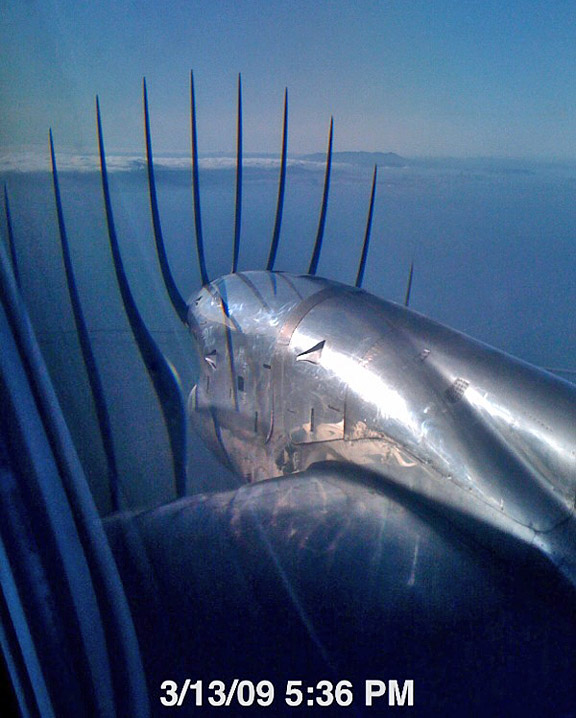EXPLAIN these iPhone Photos !!!
Posted: Sat Mar 14, 2009 9:34 am
Taken on our way back from Mt. Shasta. Four bladed turbo prop. All automatic iPhone photo ...






The image distortion here is a phenomenon caused by the nature of the CMOS image sensor in the iPhone (and some other digital cameras). This uses a strategy now referred to as "rolling shutter," where the values in each photosensing transistor are read off line (or row) by line. No mechanical shutter intervenes to stop light from striking the remaining sensors, and each line of pixel data is "stripped off" while the next line is still being exposed to light. Therefore, each line represents a different exposure period from the previous. The consequence is that wherever the subject moves relative to the rows of pixels in the image during the time it takes the entire frame to be read, horizontal displacement occurs. This is not unlike the "focal-plane shutter" artifacts, such as this famous photo, "‘Car Trip, Papa at 80 kilometers an hour’, Jacques-Henri Lartigue, 1913." As the propellers move during the exposure, the position of the prop is "sampled" by each subsequent horizontal (long axis of the chip) line - only a one-pixel high slice of the image area is imaged with the prop's current position. The prop spins so rapidly that the displacement is significant during the entire frame's exposure - most daily activities would not reveal this phenomenon.
Note that in the photo you linked, the iPhone is in the portrait orientation - the image sensor appears have its rows of transistors oriented along the longer axis. In the example of the photo taken in landscape orientation, the props appear as predominately horizontal shapes.
On another note, this photo was posted on an SCCA Solo 2 autocross forum by a Solo Safety Steward. I used to autocross almost 30 years ago, winning a local championship in 1980. We were *not* an SCCA organization, though we did host some join events with the SCCA, and our rules structure was loosely based upon the SCCA Solo 2 rulebook. Attached are photos of my Datsun 240-Z in 1979 and my Porsche 914 in 1980.